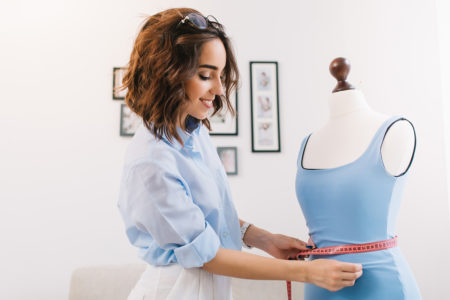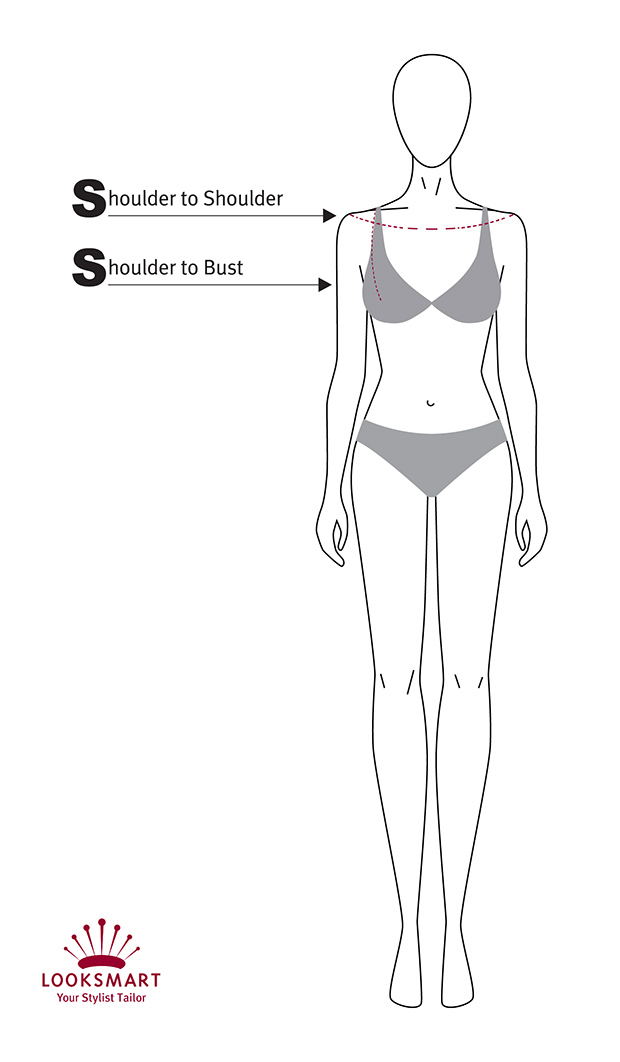Many of us have fallen victim to an online shopping fail. One brand’s size 6 is another’s size 10. The gown that looked perfect for your big event arrives. However, despite ordering it in your size, it’s loose on the hips and tight across the bust, digging in uncomfortably under your shoulder. You don’t have time to order a new one before the event, so – what now?
For a quick fix, bring that dress to the experts at LookSmart. A few alterations will have it feeling comfortable and looking custom-made.
Before you order online again, however, it’s important to know your measurements. Everyone’s body has its unique proportions. When clothing brands take standard sizing as a gentle suggestion, you’ll need to take matters into your own hands and come armed with your measurements.
In this guide, we’ll teach you how to take your measurements (from bust to hips), understand size charts, show you which measurements matter for different clothing, and explore how tailoring can elevate your wardrobe for a flawless fit.
Common measurements for women’s clothing
Shopping is easier when you know your measurements. Here are the key measurements you’ll need to take.
- Bust: Across your chest.
- Underbust: Directly under your bust.
- Waist: Around the smallest part of your torso.
- Inseam: The distance from the top of your inner thigh to your ankle.
- Hips: Around the widest part of your hips.
- Shoulders: From the outer edge of one shoulder to the other.
- Arm loop: Around your shoulder and under your armpit.
- Height: From the top of your head, straight down to the floor.
Shopping according to your correct measurements is the secret to effortless style. The perfect fit transforms how your clothes drape and move with your body. Even a plain pair of jeans with a nice top, if they fit impeccably, will make you look refined and chic.
With a great fit, you have the perfect base to layer on style and personality. Just add jewellery, a bold-coloured bag, and a timeless pair of shoes.
Tailoring 101: How to take your measurements
Knowing your unique measurements is the first step to mastering fit and style. With a measuring tape and pen, you can take control of your wardrobe and ensure that every piece flatters your shape.
Before we begin, make sure you have these three things prepared.
- A soft measuring tape
- A notepad or phone to record measurements
- A mirror for accuracy
When you take your measurements, you’ll want to stand naturally, not suck in, and keep the tape snug to your body but not tight. Wear fitted clothing or measure directly on bare skin for the most precise measurements.
Here are the simple steps to help you measure yourself at home.
Bust
Measure your bust by wrapping your tape around the widest part of your chest, typically in the middle. Make sure the tape is flat along your back.
Modern fitting experts recommend simply using your underbust measurement as the band size to find your bra size. You can take your under-bust size by measuring snugly around your ribcage, just under your bust. You’ll want to round it up to the nearest even number. This can then be compared to standard Australian underband sizes.
Then, using the bust size you previously measured, subtract that number from your bust size to find your cup size (1 inch = A cup, 2 inches = B cup, etc.).
Waist
Find the narrowest part of your torso, usually five centimetres above your belly button. Then, stand comfortably, breathe normally, and use your soft tape to note your waist measurement.
Don’t measure first thing in the morning, as your best fit comes from an accurate, relaxed measurement after you’ve eaten regular meals.
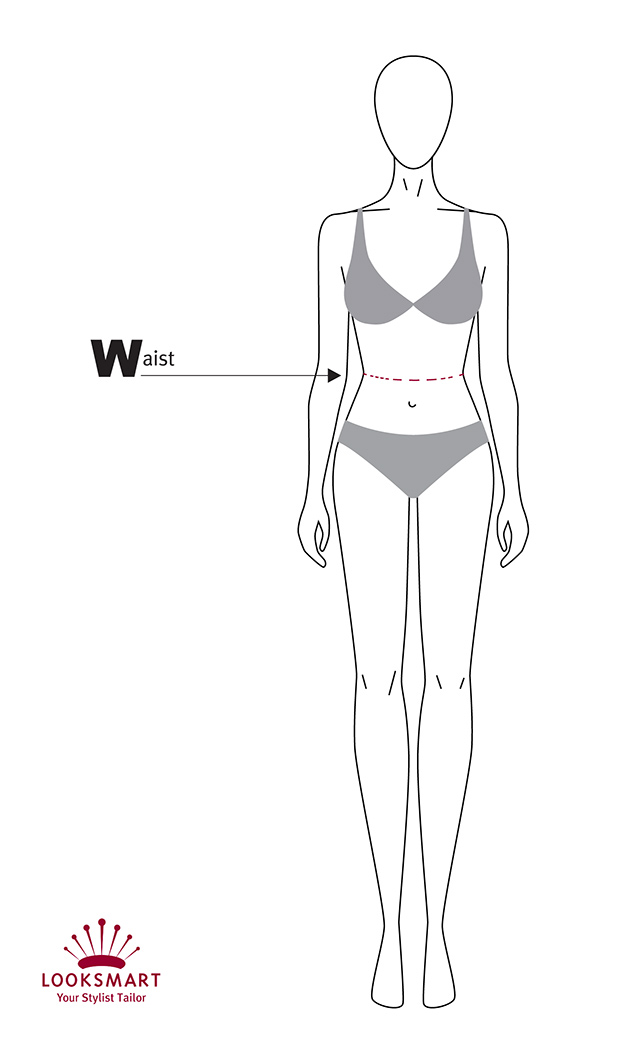
Hips
Stand with your feet together and wrap the tape around the widest part of your hips and glutes. Keep it level and snug without causing your body to contort. Use your mirror to check that the tape isn’t dipping down.
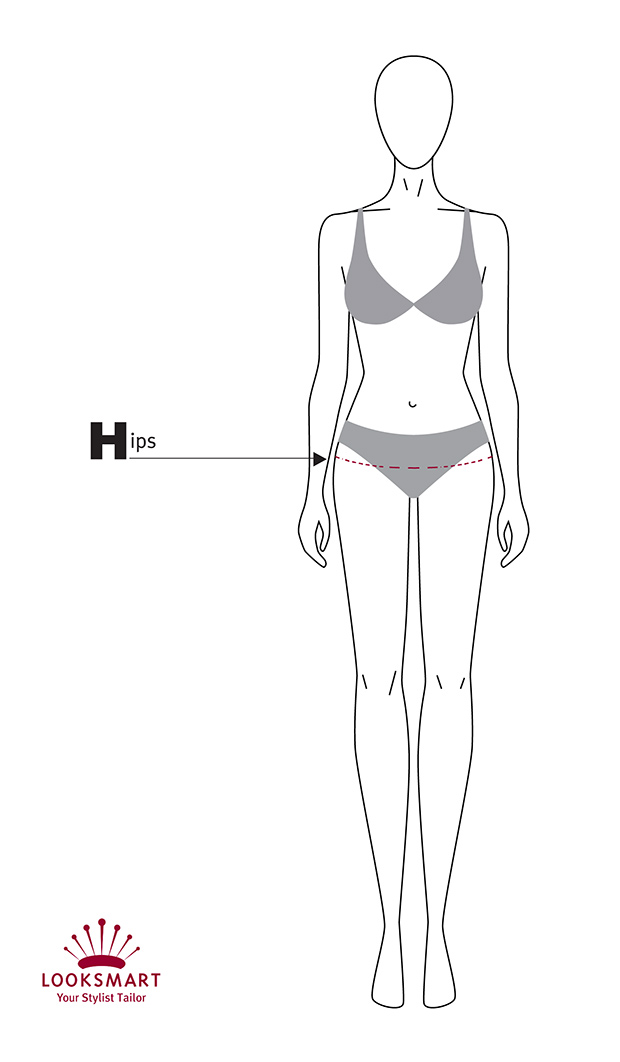
Shoulders
It helps to have someone you are comfortable with to help measure your shoulders. Measure from the outer edge of one shoulder to the other, following the natural curve of your back. Stand with your natural relaxed posture. Being hunched over or pushing your shoulders back can throw off your measurement.
Arm loop
Drape the tape over your shoulder and loop it under your armpit. Keep your arm slightly away from your body while measuring. Otherwise, your measurements will be too tight.
Inseam
Measure from the top of your inner thigh down to your ankle. If you wear heels often, add an extra half-inch to ensure the right length for trousers and jeans. In a pinch, you can use a pair of pants that fit well as a guide instead.
Height
Stand tall against a wall, feet flat, and mark the top of your head with a soft pencil you can easily rub off the wall. Measure from the floor to this point.
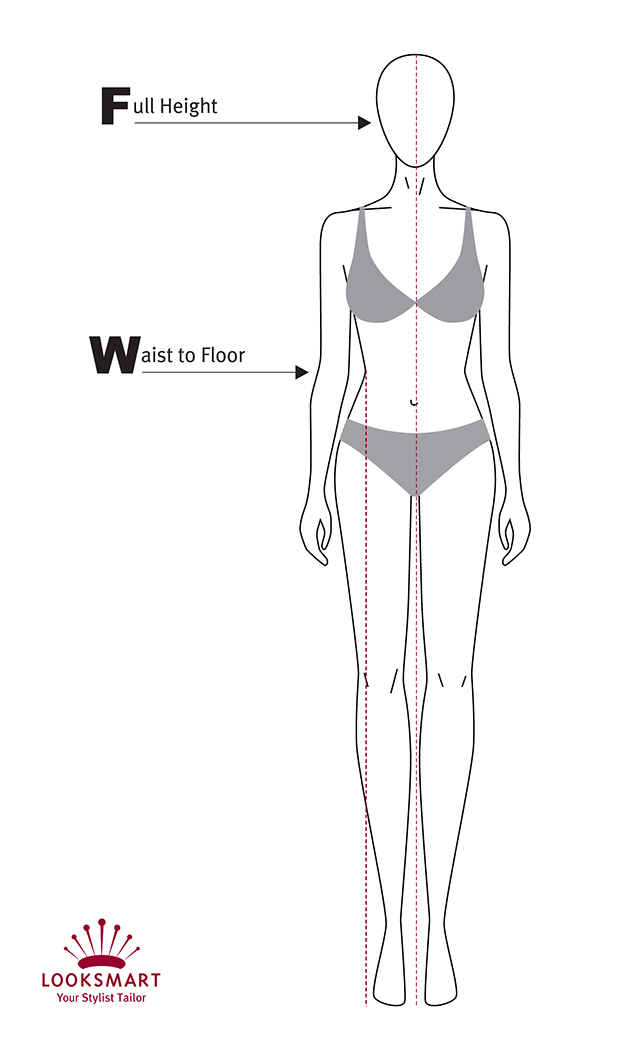
Getting expert measurements
When you measure yourself, you want to get it right, as your insights will only be as helpful as your accuracy. To ensure your measurements are right the first time, visit a tailor. Tailors measure people daily and know exactly where to take measurements to get your natural, relaxed fit.
What measurements do you need for different clothing?
Getting the perfect fit is all about precision. Whether you’re curating a work wardrobe or investing in timeless staples, these are the measurements you’ll want to take for every piece.
- Top: Bust and waist.
- Blouse: Bust, shoulder width, and sleeve length.
- Pants: Waist, hips, and inseam.
- Dress: Bust, waist, and hips.
- Skirt: Waist, hips, and inseam (optional).
- Jacket/Blazer: Bust and shoulder width.
- Shorts: Waist, hips, and inseam.
- Sweater/Hoodie: Bust and shoulder width.
- Jumpsuit: Bust, waist, hips, and inseam.
- Coat: Bust, waist, and hips.
Feeling confident in your fit
The secret to looking and feeling amazing in your clothes isn’t about fitting into a specific shape or squeezing yourself into an uncomfortable silhouette. It’s about wearing clothes designed for your body that allow you to move freely and confidently.
Knowing your measurements helps you choose and tailor styles that fit and feel made for you. Naturally, look for clothes that will fit your body shape well. For example, if you don’t have a wide ratio between your hips and waist, look for pants that work for you, not the other way around.
Don’t force yourself into the pair of pants you wore when you were 18. Go get the pants that will support you through your next stage of life and get them expertly tailored for the perfect fit. The confidence that comes with wearing clothes that fit shows in how you carry yourself.
Refine your wardrobe with professional tailoring
Off-the-rack clothing is made to fit standard mannequin sizes, not yours. That’s why even the most stunning pieces can sometimes feel slightly wrong. We’ve all tried something on and thought it was perfect, except for the sleeve length, bust size, etc.
Tailoring bridges this gap and turns standard-size clothes into pieces that fit like they were designed just for you.
Investing in alterations isn’t about looking fancy, it’s also a sustainable choice. That jacket you haven’t worn in years? A few expert adjustments could bring it back to life, saving it from the landfill. Plus, well-tailored pieces stand the test of time, giving you a wardrobe that lasts season after season.
LookSmart’s expert tailoring ensures your clothes fit like a glove, enhancing your comfort and confidence while extending the life of your wardrobe.
When should you update your measurements?
Your body changes over time, and so should your measurements. Weight changes, strength training, pregnancy, or even changes in age and posture can all impact how your clothes fit.
To avoid size issues, recheck your measurements before investing in key wardrobe staples or tailoring your pieces. Different fabrics and garment styles can also play a role. Structured pieces like blazers require more precise sizing, while stretchy fabrics offer flexibility.
Size charts are supposed to add clarity to finding your size, but – despite this – they usually aren’t consistent. Check the sizing guide from the shop you are buying from first to ensure your measurements match their specific sizing.
Even with a size chart, brands can have slight variations in fit, so don’t rely solely on the number. Focus on the measurements. If you’re between sizes, sizing up and tailoring for a custom fit is always smarter than hoping a smaller size will work.
Lastly, double-check that you use a size chart from the correct country to avoid unwanted surprises. Here is the standard Australian sizing chart to help you determine your size.
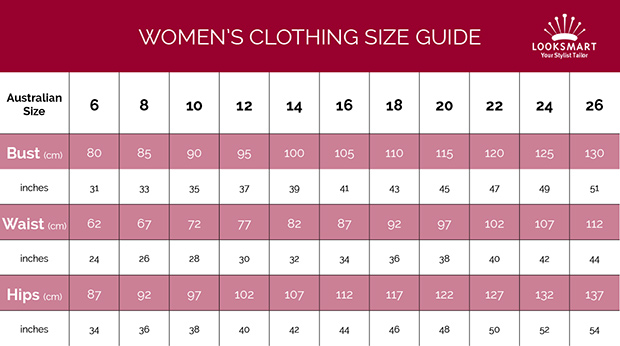
International size conversions: Australian to global sizing
Now that you know your Australian size, you can use a conversion chart to compare it to international sizing. Since brands interpret sizes differently, remember to rely on your measurements rather than the number on the tag.
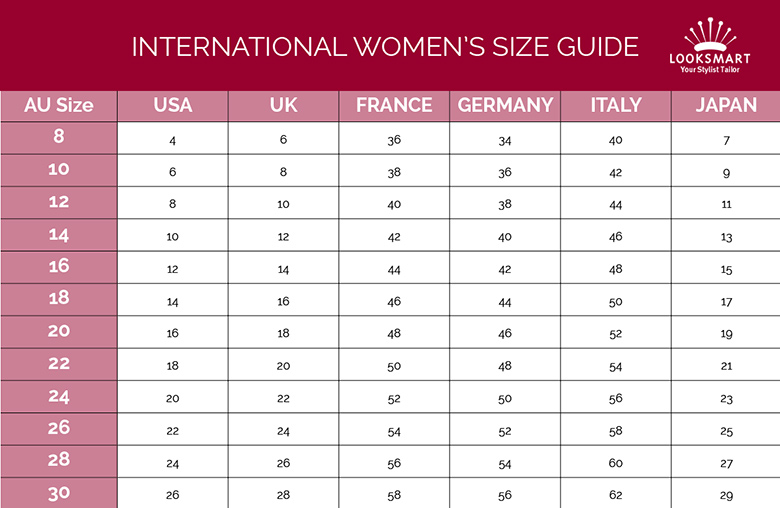
Summing up
Understanding your measurements is the foundation of a wardrobe that looks and feels incredible. Professional alterations can make all the difference if you’re looking for the confidence that comes with clothes that truly feel like they were made for you.
At LookSmart, we tailor your favourite clothes to perfection, whether it’s a new wardrobe addition or a beloved piece that needs a refresh. Find your nearest location here and pop in for a chat with our experienced tailors. We’ll help you achieve your best fit, so you feel confident and comfortable in all your clothes.
FAQs
How do I know my size when clothing sizes vary so greatly?
Our advice is to always refer to the brand’s size guides. Try focusing less on the (sometimes arbitrary) size you think you are and more on your actual measurements. When in doubt, size up.
How do I correctly measure my bust size?
To measure your bust size (or chest size), wrap the measuring tape around the fullest part of your breast, ensuring the tape is level across your back. If you are looking to find the size for your bra underband, measure right underneath your bust on top of the ribcage. ou can use this body measurement to help determine your cup size and bra size.
How can decades of experience in tailoring help with my fit?
Decades of experience in tailoring mean a deep understanding of how body measurements and garment proportions affect fit. Skilled tailors can adjust clothing sizes and patterns precisely, ensuring a smooth fit that enhances your body and style. They can also take accurate measurements (from waist measurements to bust size and band sizes).

